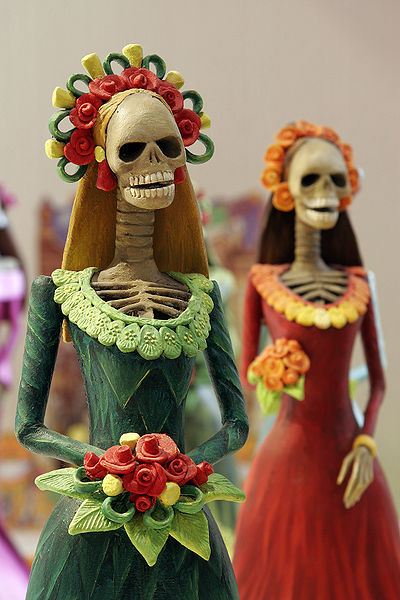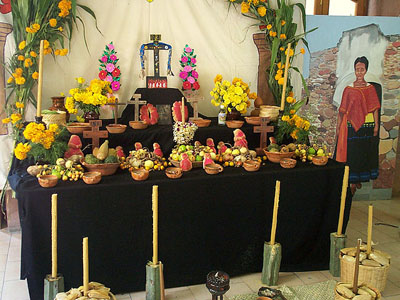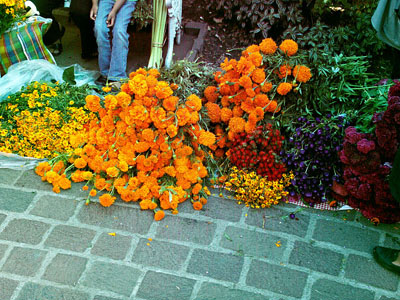Mexico’s Day of the Dead traditions will figure prominently in SUN GOD, the third Emilia Cruz mystery novel. The holiday focuses on gatherings to pray for and remember friends and family members who have died.
People go to cemeteries to be with the souls of the departed and build private altars commemorating those who have passed away. If the souls return, they will hear the prayers of the living and perhaps offer comfort.
So in no particular order, here’s a guide to celebrating death—and life.
Muertos
These skeleton figurines symbolize the departed and the Day of the Dead but have become part of the mainstream Mexican art world as well. Muertos wear different clothes to represent specific people and occupations. Markets across Mexico sell them, dressed as virtually anything you can think of, from mermaids to aliens and everything in between.
La Catrina
The Catrina, popularized by artist and cartoonist José Guadalupe Posada (1852-1913), is a muerto of a high society woman and one of the most popular figures of the Day of the Dead celebrations in Mexico.
Ofrendas
This is the offering left to attract the souls of the dead, notably in the form of altars. There are guidelines as to how the items should be set out and what is to be used such as toys for children, bottles of alcohol, food, candy, etc. They can range from a simple home tabletop to hugely elaborate displays in schools, churches, and shopping malls.
Calavera
Literally, “skull.” Sweets, notably chocolate, in the shape of skulls are sold everywhere for Day of the Dead festivities. In October, the city of Toluca hosts a sugar market that dominates the main plaza with vendors selling every size and shape of candy calavera imaginable. There is actually a website devoted to sugar skulls, with an amazing photo gallery.
Los angelitos
Children who have died and are remembered in a special way with altars decorated with toys and candy. I knew a woman in Mexico City who set out an elaborate altar for a child she’d lost several years previously as a way of coming to terms with the child’s death. She told me that as she placed the last item on the altar she felt the child’s spirit and knew that she shouldn’t mourn any more.
Pan de muerto
Sweet bread made with eggs, usually baked into a round or oval shape and decorated with white sugar icing to symbolize bones. I use the same recipe for basic sweet rolls.
Flor de muerto
Marigolds are most often used to decorate altars, graves, etc. Sometimes masses of marigolds are shaped into skulls for parades and other events. The flower is thought to summon the spirits of the dead.
La Llorona
A legend throughout Latin America of a woman who lost her children. Grief turned her into a banshee and her screaming can be heard at night. The story is a little different in each place but in Mexico is a star-crossed drama of spurned love tangled up with the Spanish conquest.





